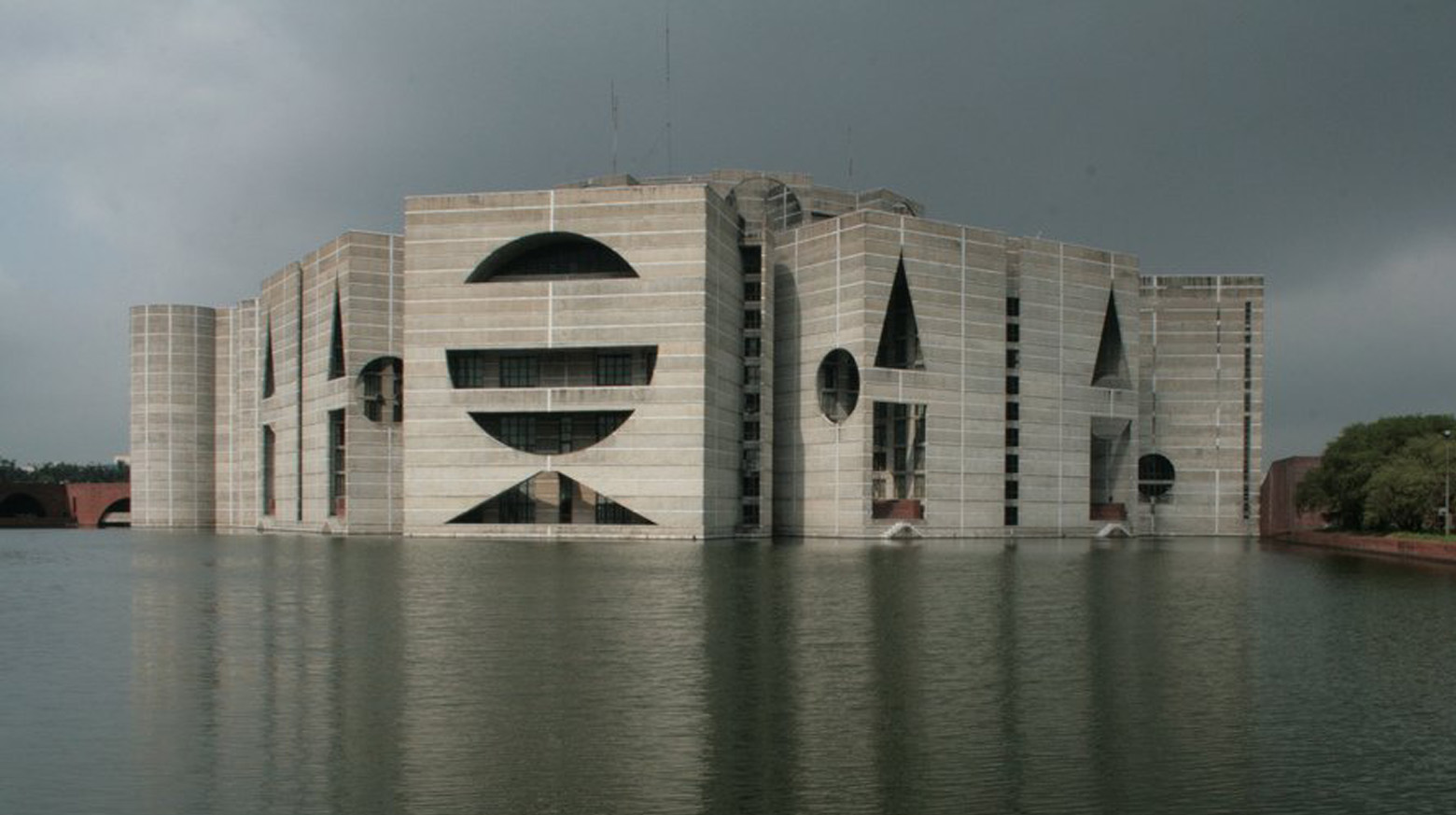Architecture is an integral part of our daily lives. Not only does it provide us with spaces to live, but it also enriches our spirit and cultural heritage. Sometimes, a building can represent an entire nation. The National Assembly of Bangladesh is an eloquent example of this.
The Jatiya Sangsad Bhavan, or National Assembly Building, is the seat of the Parliament of Bangladesh, located in the capital Dhaka, Sherebangla Nagar. Spanning 840,000 square meters, this legislative complex is one of the largest in the world, designed by Louis Kahn.
Historical context and conception
Louis Isadore Kahn, an American architect of Estonian origin based in Philadelphia, began construction in October 1964 when Bangladesh was still known as East Pakistan. The project was commissioned by Ayub Khan, from the capital of West Pakistan, Islamabad, with the aim of pacifying the Bengalis by building a modern legislative complex.

Aesthetic Uniqueness with Symbolic Significance
Kahn designed the entire Jatiya Sangsad complex, including the lawns, lake, and residences for the Members of Parliament (MPs). Kahn’s design philosophy aimed to represent Bengali culture while maximizing spatial efficiency. The exterior of the building is remarkable for its simplicity, with massive walls deeply recessed by porticos and large openings of regular geometric shapes.
The main building, at the center of the complex, is divided into three parts: the Main Plaza, the South Plaza, and the Presidential Plaza. An artificial lake (Crescent Lake) surrounds three sides of the main building, extending to the parliamentary accommodation complex. This skillful use of water to reflect the riverine beauty of Bengal adds aesthetic value to the site.

Kahn’s philosophy and international recognition
In the words of Kahn himself:
“In the assembly I have introduced a light-giving element to the interior of the plan. If you see a series of columns you can say that the choice of columns is a choice in light. The columns as solids frame the spaces of light. Now think of it just in reverse and think that the columns are hollow and much bigger and that their walls can themselves give light, then the voids are rooms, and the column is the maker of light and can take on complex shapes and be the supporter of spaces and give light to spaces. I am working to develop the element to such an extent that it becomes a poetic entity which has its own beauty outside of its place in the composition. In this way it becomes analogous to the solid column I mentioned above as a giver of light.”
https://www.archdaily.com/83071/ad-classics-national-assembly-building-of-bangladesh-louis-kahn
The National Assembly Building received the Aga Khan Award for Architecture in 1989.
Architecture: A symbol of independence and challenge
For a new country like Bangladesh, this architecture played a crucial role in announcing its independence to the world. In my artistic creations, I aim to pay tribute to this great architect on behalf of my country. When I found this broken piece of stone, its shape and color reminded me of the National Assembly Building of Bangladesh. But why a broken shape? Because it is the most important building for a country, where members of parliament swear to serve the people and where the president enacts crucial laws.


Personal reflections and criticism
Bangladesh is a country where corruption is endemic. Laws are passed but often not enforced, and parliamentarians swear to serve the people, but this oath is often overshadowed by nepotism and personal interests. It deeply saddens me. I have seen this magnificent building from the outside, but I have never had the chance to see it from the inside, as access is restricted to ordinary people.
Thus, through this artistic tribute, I not only wish to celebrate the architectural beauty of the Jatiya Sangsad Bhaban but also to express my pain and criticism towards the socio-political realities of my country.


Leave a Reply